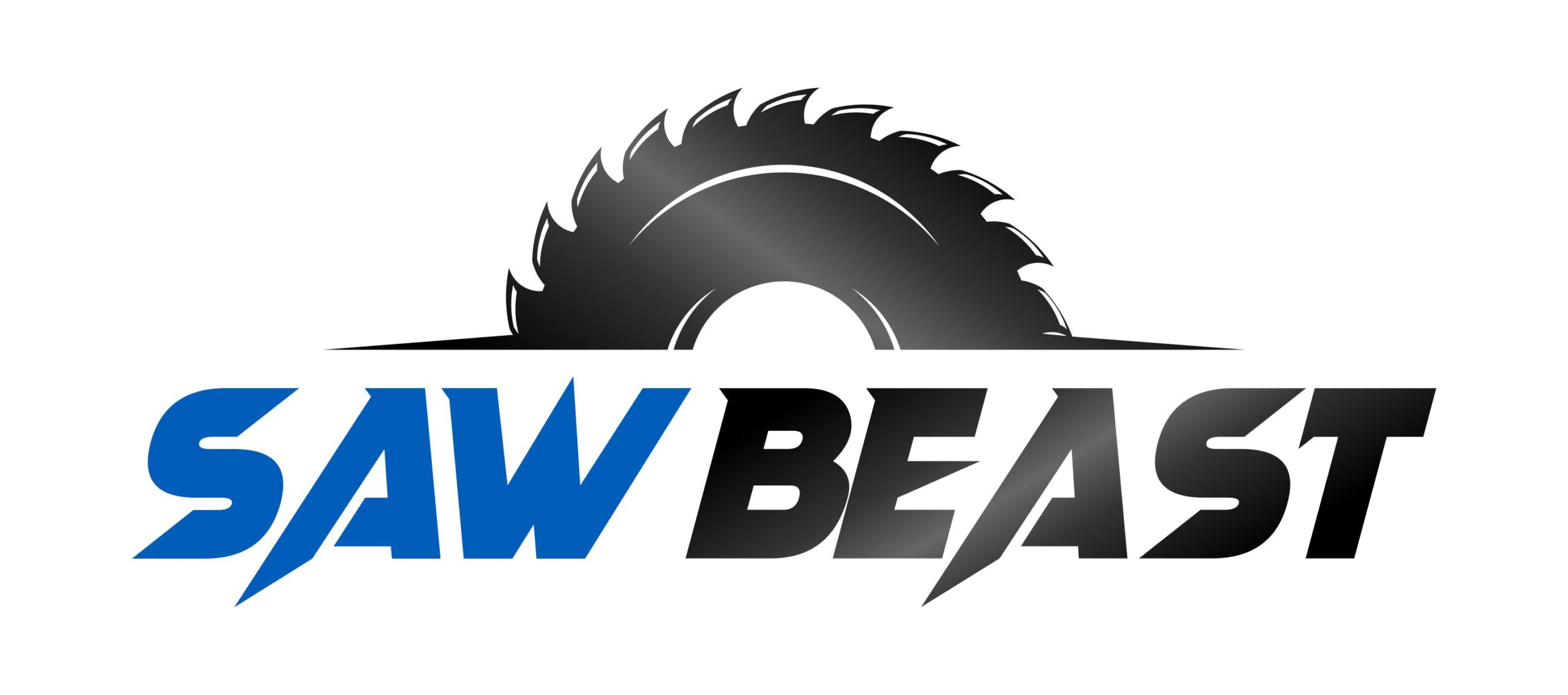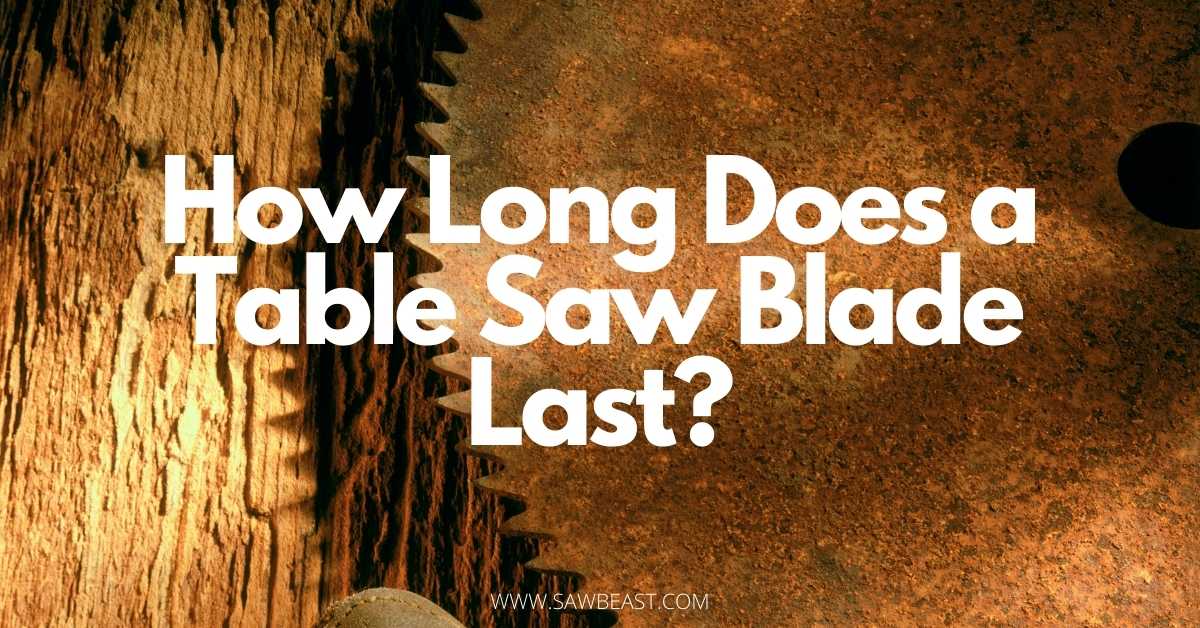A table saw is a must tool for all woodworkers. The most important component of the saws is their blades, as they determine the quality of the work done. A good one can complete the task perfectly while the opposite can ruin it.
There are different blades designed specifically for different materials and to create all sorts of art, so how long a blade lasts varies with its size, number of teeth, and thickness.
In addition, the material it is being used on and the amount of pressure applied also contribute to the blade’s lifespan. On average, a blade lasts for about 2 to 4 years in prime condition before it dulls.
How Long Does A Table Saw Blade Last and How to Tell If a Blade Is Dull?
Often table saw users do not realize that their blade is no longer as sharp as it once was. Following are a few noticeable things that can help identify a dull blade.
1. An increased amount of chipping and tears
A sharp blade slices through the fibers thoroughly while the dull blade tears and break the fibers. Thus, if there are tear-outs and increased chipping than usual after every other cut, the blade has most likely worn down.
2. Reluctant while cutting
A dull blade will take longer to make the same cuts than a sharp one. It would resist making the cuts and may even get stuck mid-cut. The blade has dulled if it feels like more force is required to make a cut than before.
3. Burn marks
As a dull blade takes more time and is forced to proceed through a cut, there is increased friction. Friction results in heat which may lead to burn marks on the workpiece- or even smoke if it is wood.
4. Deviation from the cut lines
As mentioned earlier, dull blades resist and require more force while cutting. Therefore, they take the path of least resistance, deviating from the cut lines, leading to jagged and imprecise cuts.
5. More noise
If there is more noise or a different sort of noise than usual (it may sound as if the motor is straining to cut), then most probably, the blade is dull.
A dull diamond-edged blade can be recognized by its appearance and the signs above.
6. Smooth and glazed
When the diamonds on the blade wear out and the blade appears smooth and glazed, it indicates that the blade has dulled.
What to Do?
Depending on the blade type, it can be cleaned, sharpened, or replaced.
How to Clean a Blade?
- Soak it in an all-purpose cleaner for half an hour. Simple Green is one of the best cleaners as it is strong enough to remove residues from saw blades but not too strong to be hazardous.
- Brush it, focusing mainly on the teeth but brush over the whole surface at least once.
- Rinse off the blade with plenty of fresh water and then oil it. Before oiling, ensure it is completely dry or will rust otherwise.
Table saw blades are designed to slice through all materials. Be extra careful not to cut yourself while cleaning accidentally.
Additionally, wear protective gear such as chemical-resistant gloves, goggles, and masks, as most cleaners generally range high on the pH scale and can be caustic.
The number of times a blade can be cleaned before it must be sharpened or replaced differs with each blade.
A high-quality blade may have to be cleaned about three times before it needs to be sharpened or replaced, whereas a regular bargain blade might have to be cleaned only once or maybe twice.
It depends on the quality of the blade and its use. If the signs of a dull blade still occur soon after cleaning, the blade must be either sharpened or replaced immediately.
How to Sharpen a Blade?
Steel-tipped blades are quite easy to sharpen. They can also be done by yourself using a hand file or a mechanical blade sharpener after taking necessary safety precautions.
Nonetheless, suppose you fail to sharpen the blade correctly. In that case, it should be replaced, as it can ruin the material it is being used on.
However, the same is not the case with carbide-tipped or diamond-edged blades. They both have to be done by a professional.
Carbide-tipped blades must have all teeth ground by a diamond wheel at certain angles. In contrast, the diamond-edged blades can be sharpened using a dressing stone to deglaze them.
If you notice that your blade needs sharpening, you must see to it immediately instead of putting it off until you are done with your project.
A dull blade produces more heat, and the excessive heat can cause the blade to warp, leading to increased vibration during cuts and thus inaccuracy.
Furthermore, it will result in a greater expense because now, in addition to being sharpened, the warped blade will also need to be flattened.
Is it Worth Sharpening a Blade?
If the blade is of high quality, it is better to get it sharpened instead of replacing it. Still, it is better to replace a carbide-tipped blade in most cases, as it takes between 25 to 50 cents to ground each tooth.
Compare the cost of sharpening with that of a new one; replacing is usually the better option if you use a bargain blade.
Final Thoughts
While the longevity of a blade differs, it can be improved by proper maintenance. Nonetheless, it is advised that you replace your blade or sharpen and clean it once signs of dullness appear.
Several signs indicate the loss of sharpness of your blade, including burn marks, greater noise, increased amount of tears, and difficulty in cutting.
Therefore, to ensure longevity and efficient cutting, it is important that you provide your blades with proper maintenance and regularly replace them.

